The Golden Goddess Philodendron plant is a beautiful neon green vine. The Golden Goddess loves to climb and can cover an area of up to 10 feet indoors. The Golden Goddess is a popular house plant that is known for its attractive golden-yellow leaves. vine is pretty easy to care for and adapts to a variety of growing conditions.
Golden goddess philodendron scientific name is Philodendron ‘golden goddess’. It is native to the warm tropical climate of Central and South America. It is a cultivar of the species Philodendron scandens, which is native to Central and South America. The Golden Goddess cultivar is known for its golden-yellow leaves, which can grow up to 20 inches long.
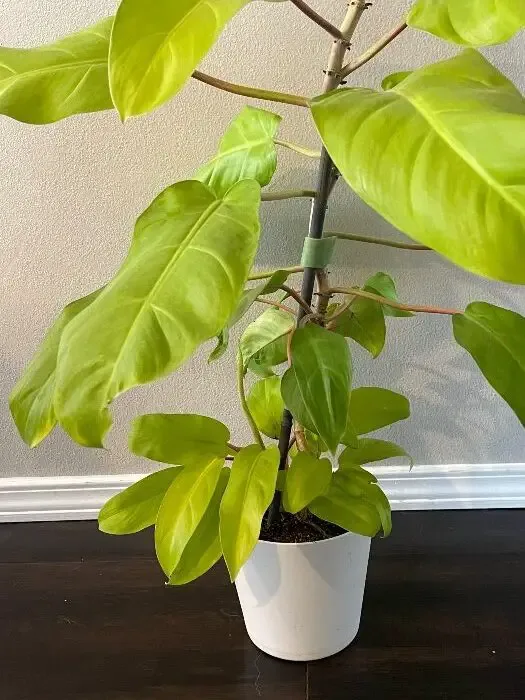
Some Information on the golden Goddess:
Can the philodendron golden goddess be variegated? Golden Goddess Philodendron will sometimes have “sport variegation” and give you beautiful dark green streaks or patches on the leaves.
Is Philodendron golden goddess rare? It is not uncommon to see Philodendron scandens ‘Aureum’, also known as the Golden Goddess philodendron, in local garden centers and online plant retailers. Costa Farms Carries this plant. While it may not be the most widely available philodendron cultivar, it is not particularly rare either.
Is Lemon Lime Philodendron same as Golden goddess? Yes, Lemon lime philodendron is another name for the golden goddess. Philodendron Malay Gold is also another name for the Golden Goddess philodendron.
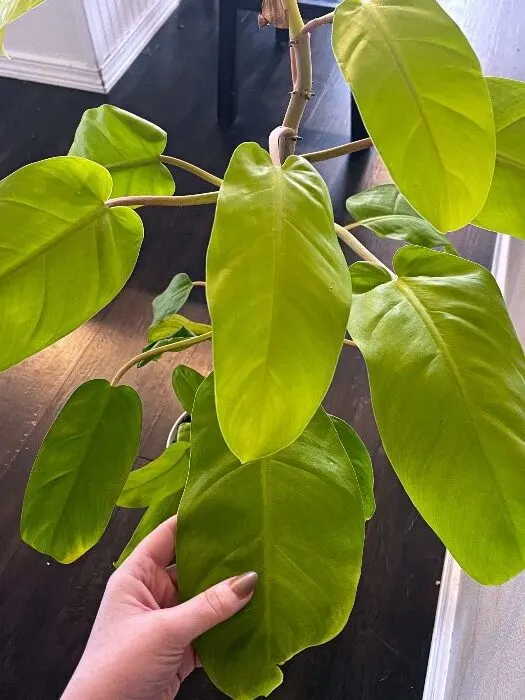
How Big Does Golden Goddess Philodendron Get?
The Golden Goddess philodendron is a vining plant that can grow quite long In optimal conditions. With plenty of sunlight and regular watering, it can grow up to 10 feet or more in length. However, it is also possible to keep the plant smaller by pruning it regularly and providing it with a support to climb, such as a moss pole or trellis.
This plant climbs well on a pole like a moss pole if tied to keep the plant attached. Some people also let it trail over a hanging basket or along a shelf or window sill. If you prune this plant, you can keep it smaller with more of a bush like structure, but the leaves are pretty large to grow this beauty on a table top like you can a Neon Pothos.
The size and speed of the growth of Golden Goddess is affected by the size of the pot in which it is grown. If the plant is root-bound or crowded in its pot, it may not grow as large as it would if it had more space to spread out.
It is generally a good idea to repot the plant every spring into a larger pot as it grows. This gives it enough room to spread out and reach its full potential. Repotting every year up to the next sized pot helps avoid root bind and hydrophobic soil which can stress the vine.
Pruning a Golden Goddess Plant
Pruning a Golden Goddess philodendron can help to keep the plant looking neat and healthy, and can also encourage new growth. Here are a few tips for pruning your Golden Goddess:
- Use clean, sharp scissors or pruning shears to make precise cuts.
- Remove any dead, damaged, or diseased foliage. This will help to keep the plant healthy and prevent the spread of any problems.
- Trim away any long, straggly vines that are not attached to a support. This will help to keep the plant looking neat and will encourage new growth.
- If you want to encourage bushier growth, you can cut back the tips of the vines. This will stimulate the plant to produce new growth from the base of the vine.
- Be careful not to remove too much foliage at once, as this can stress the plant and slow its growth.
- After pruning, water the plant well to help it recover from the stress of pruning.
Remember to always use clean, sharp scissors or pruning shears when pruning your Golden Goddess, and avoid damaging the plant’s delicate stems.
Does golden Goddess Need A Moss Pole?
The Philodendron golden goddess is a great climber. It enjoys climbing up a moss pole. Moss poles can help support the growth of a Golden Goddess philodendron and provide anchors and moisture for the roots as the vine climbs, This is especially important the plant is allowed to grow to its full potential.
The Golden Goddess is a vining plant that can grow quite long, and its tendrils will cling to any surface they encounter as they grow. A moss pole provides a vertical support for the plant to climb, which can help to keep it upright and prevent it from becoming too heavy or top-heavy.
If you do decide to use a moss pole for your Golden Goddess, make sure to install it before the plant gets too large. It is easier to train a young plant to climb a moss pole than it is to try to retrofit an older, larger plant. To train your Golden Goddess to climb a moss pole, gently guide its tendrils around the pole as it grows, and use plant ties or clips to secure the tendrils to the pole.
While a moss pole can be a useful tool for supporting the growth of a Golden Goddess philodendron, it is not necessary for the plant’s survival. Other types of poles and supports will also provide a good base and anchor for this vine. The Golden Goddess can also be grown without a moss pole, and can be trained to climb a trellis or other vertical support instead.
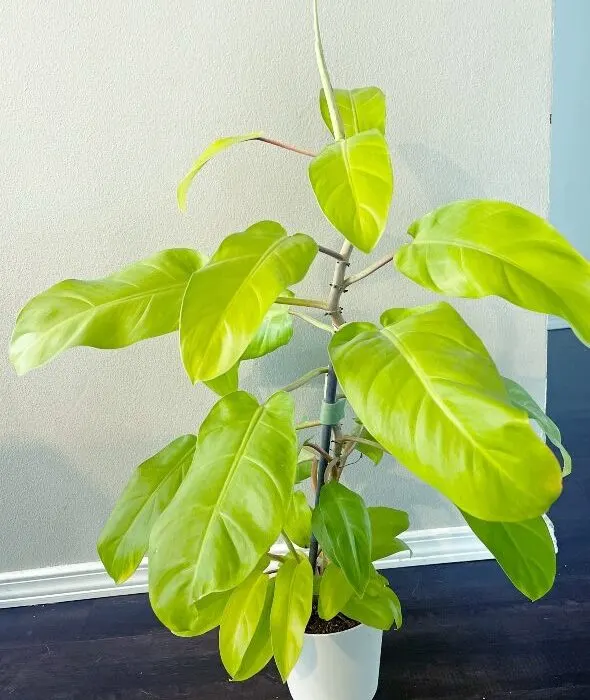
Is golden goddess philodendron toxic?
The Golden Goddess philodendron (Philodendron scandens ‘Aureum’) is considered to be toxic to pets and humans if ingested. The plant contains calcium oxalate crystals, which can cause irritation and swelling of the mouth, throat, and digestive system. Symptoms of philodendron poisoning may include difficulty swallowing, excessive drooling, vomiting, and diarrhea. In severe cases, ingestion of the plant can lead to difficulty breathing, tremors, and even coma.
If you suspect that someone or a pet has ingested a Golden Goddess philodendron plant, it is important to seek medical attention immediately. The ASPCA Animal Poison Control Center (APCC) can also provide information and assistance in cases of plant poisoning. It is a good idea to keep the plant out of reach of children and pets to prevent accidental ingestion.
While the Golden Goddess philodendron is toxic if ingested, it is generally considered to be safe to grow and handle, as long as it is kept out of reach of children and pets.
Golden Goddess Philodendron Propagation Methods:
There are quite a few different methods that you can use to propagate a Golden Goddess philodendron. The best method for you will depend on what you are trying to do, the time of year and health of the plant. Here are a few options:
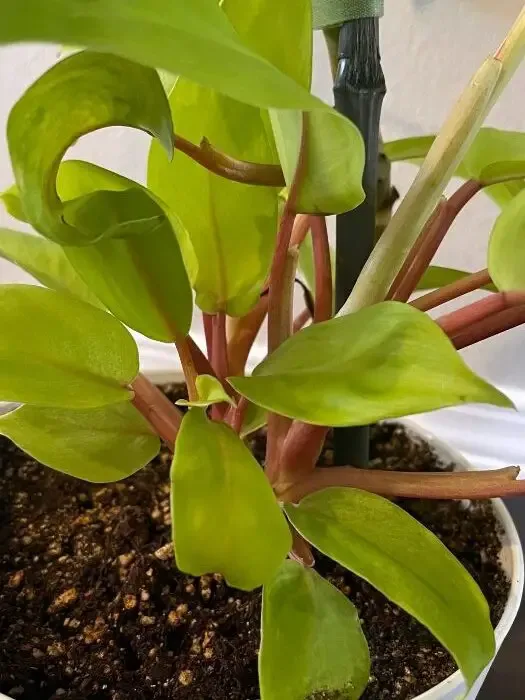
- Stem cuttings: One of the easiest ways to propagate a Golden Goddess is to take stem cuttings and root them in water or potting soil. To do this, cut a stem from the plant that is at least 6 inches long and has at least two leaves. Remove the lower leaves, leaving only the top two or three intact. Dip the cut end of the stem in rooting hormone, if desired, and place it in a jar of water or a pot of moist potting soil. Keep the soil or water consistently moist, and in a few weeks, roots should begin to form. When the roots are well-established, you can transplant the cutting into a pot with fresh potting soil.
- Air layering: Another method for propagating a Golden Goddess is air layering. To do this, locate a stem on the plant that is at least 6 inches long and has at least two leaves. Using a sharp knife, make a shallow cut through the stem all the way around, about an inch or so below one of the leaves. Dust the cut end with rooting hormone, and wrap the stem with moist sphagnum moss. Secure the moss in place with plastic wrap or a rubber band. In a few weeks, roots should begin to form within the moss. When the roots are well-established, you can cut the stem below the roots and transplant the rooted section into a pot with fresh potting soil.
- Division: If your Golden Goddess has become too large or overcrowded, you can propagate it by dividing the plant. To do this, carefully remove the plant from its pot and gently separate the roots into smaller sections, taking care not to damage them. Replant each section in its own pot with fresh potting soil.
- Water propagation: Take a stem cutting from the plant that is at least 6 inches long and has at least two leaves. Remove the lower leaves, leaving only the top two or three intact. Dip the cut end of the stem in rooting hormone, if desired, and place it in a jar of water. Make sure that the water covers the roots but not the stem and leaves.Keep the jar in a well-lit location, but out of direct sunlight. In a few weeks, roots should begin to form. When the roots are well-established, you can transplant the cutting into a pot with fresh potting soil.
Propagation TIPS:
- When propagating a plant in water, it is essential to keep the water clean and fresh. Change the water every few days to prevent it from becoming stagnant or contaminated, and be sure to use a clean container and fresh water each time.
- Also, be patient – it can take a few weeks or even months for roots to form and the new plant to establish itself.
- Remember to keep the soil or water consistently moist when propagating a Golden Goddess, and be patient – it can take a few weeks or even months for roots to form and the new plants to establish themselves.
Golden Goddess Philodendron Care
How do you take care of a Golden Goddess Philodendron? Overall, the Golden Goddess philodendron is a relatively easy plant to care for. The biggest pitfall is watering issues and conquering the common pests that tend to attack the golden. With these few tips and tricks you can grow a beautiful golden goddess philodendron.
| Familiar Names: | Golden Goddess,Lemon Lime Philodendron. Philodendron Malay Gold |
| Scientific Name | Philodendron ‘golden goddess’. It is native to the warm tropical climate of Central and South America. |
| Plant Family | This plant is a member of the Araceae family. The Araceae family, also known as the arum family are aroids. This is a large family of flowering plants that includes a wide variety of familiar indoor plants, such as the pothos, peace lily, the calla lily, and the jack-in-the-pulpit. |
| Care Difficulty | The Golden Goddess philodendron is a relatively easy plant to care for, and it is known for its ability to adapt to a variety of growing conditions. |
| Temperature | The Golden Goddess prefers a warm, humid environment, but it can tolerate a wide range of temperatures. Avoid placing the plant in a location that is too cold or drafty. |
| Watering | Water the plant consistently, keeping the soil evenly moist but not waterlogged. Allow the soil to dry out slightly between waterings. |
| Soil | Use a well-draining potting soil mix that is formulated for indoor plants. Or mix your own soil with our recipe in our printable care card. |
| Fertilizer | Feed the plant with a balanced liquid fertilizer every two to four weeks during the growing season. |
| Lighting | Light: The Golden Goddess prefers bright, indirect light, but it can also tolerate low light conditions. Avoid placing the plant in direct sunlight, as this can cause the leaves to yellow or burn. |
| Growth | This philodendron grows as a large vine. |
| Pests: | Pests can be common with this plant. Especially spider mites, mealy bugs and aphids. Always check the underside of the leaves for signs of pests and damage. If you do find pests, a neem oil spray is effective at removing most pests. |
We have put together a printable care guide with all of the care needs for this plant .By following these simple care tips, you can help to ensure that your Golden Goddess philodendron stays healthy and thrives.
Philodendron Golden Goddess Care Guide

The Golden Goddess Philodendron plant is a beautiful neon green color. This plant loves to climb and grows in a vining pattern.
This Care Guide will teach you how to keep this tropical Aroid happy all through the year.
Materials
Instructions
Soil Preference:
- This aroid requires a light soil.
- A mix of potting soil, perlite and orchid bark will keep the roots happiest.
- Here is our mix.
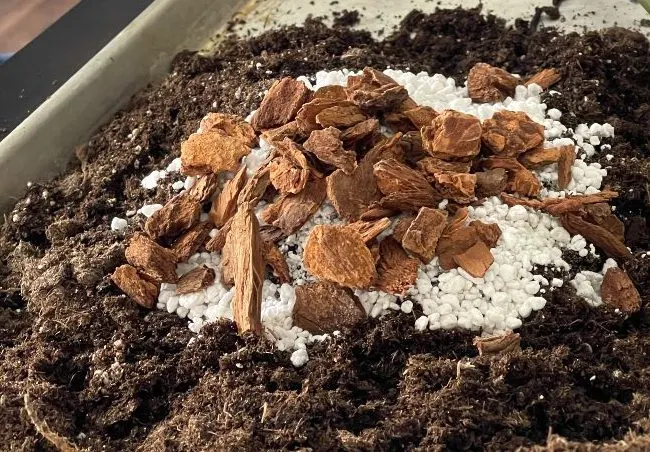
- Two parts potting soil to two parts perlite to one part orchid bark.
- A heavy soil potting mix is not recommended for aroids.
Pot Size and Type:
- The Philodendron Golden Goddess grows relatively quickly
- If you want to encourage faster growth choose a pot about 2 inches wider in diameter than the current pot.
- Any well drained pot can be used. It MUST have drainage.
- Repot every second year or when roots come out the drainage holes on the pot bottom To the next pot size up.
- Don't jump to a huge pot from a small one unless you wish to encourage faster growth. Just go to the next size up pot.
Lighting:
- This Philodendron enjoys bright indirect or dappled light.
It will tolerate lower indirect light if it has some brighter moments in the day. - Some filtered sunlight from a window will be appreciated.
- Shield this aroid from strong direct light in summer south and west sunny windows. The leaves will burn.
- Tip: Window sheers or blinds can offset some brief periods of high direct light.
Watering:
- Water your plant when the soil is dry. Aroids do not like to be overly wet. Try a watering schedule of every other week.
- Watering is best done on a regular schedule so the plant is not over or under watered. Both can cause stress on the plant.
- This tropical plant enjoys humidity. In dry climates this Philodendron will thrive with a humidifier nearby. OR use a pebble tray under the pot filled half way with water.
- In dormant winter months reduce watering to when the soil is dry.
- Never let this plant get wet feet. Water when the top 2 inches of soil are dry. If the soil is compacted the bottom of the soil can remain wet which encourages root rot. Heavy wet soils attract Fungus Gnats.
How to Fertilize:
- Apply a good quality fertilizer (linked in materials) monthly through Spring and summer.
- Decrease feedings by late Fall and allow the philodendron to rest through the winter months.
Temperature:
- Keep the plant at a low of 65 Degrees F. to upward of 85 Degrees F. It enjoys warmth and humidity.
Pinching:
1. The Golden Goddess tends to grow in a leggy pattern.
2. To maintain a bushier shape, you will need to pinch back the leggy growth.
3. Pinch close to a node, whatever is left of the stem will die off.
4. Periodically prune this plant by pinching back the leggy growth.
Pests:
- This plant is not fussy and resists pests. However all plants can get attacked by pests.
- Stress by longterm overwatering, poor light, extreme temperatures and soil conditions are contributors to plant stress..
- Spider mites, mealy bugs, scale, thrips and whitefly are the most common houseplant pests you will see.
- Read our post on How to get rid of aphids and other pests with our homemade pesticide soap recipe or neems oil.
- To minimize the possibility of pests be sure to check all nursery plants before bringing them home.
- Quarantine all new plants until you are sure no pests live in them.
How to Propagate:
- Propagation is easily done through leaf node stem cuttings.
- You need a 3 to 6 inch leaf stem with a couple of nodes and healthy growth.
- This more easily seen on vines but the golden goddess has nodes at the leaf base too.
- Cut a long stem from the mother plant as close to the base of the plant as possible.
- Place the node into a jar with water. Use tap water that has settled 24 hours in the jar to dissipate chemicals harmful to the philodendron
- Set the jar in a well lit area.
- After several weeks roots will grow. Allow the roots to get an inch or more in length.
- Plant gently and firmly into pot with proper soil mix.
- Make sure to keep the soil moist until the roots begin to set into the soil.
Notes
This plant is considered toxic and should be kept out of reach of small children and pets.
Where To Purchase Golden Goddess Philodendron
Click here to purchase Philodendron Golden Goddess from Etsy
You can purchase this plant from local nurseries or commercial greenhouses. However, Sometimes it can be difficult to locate in stores. Buying online is a convenient option for obtaining hard to find plants. I usually purchase from the small plant shops on Etsy. Although the shipping is getting more difficult, the plants generally arrive in good shape and when promised.
More Beautiful Philodendron Plants:
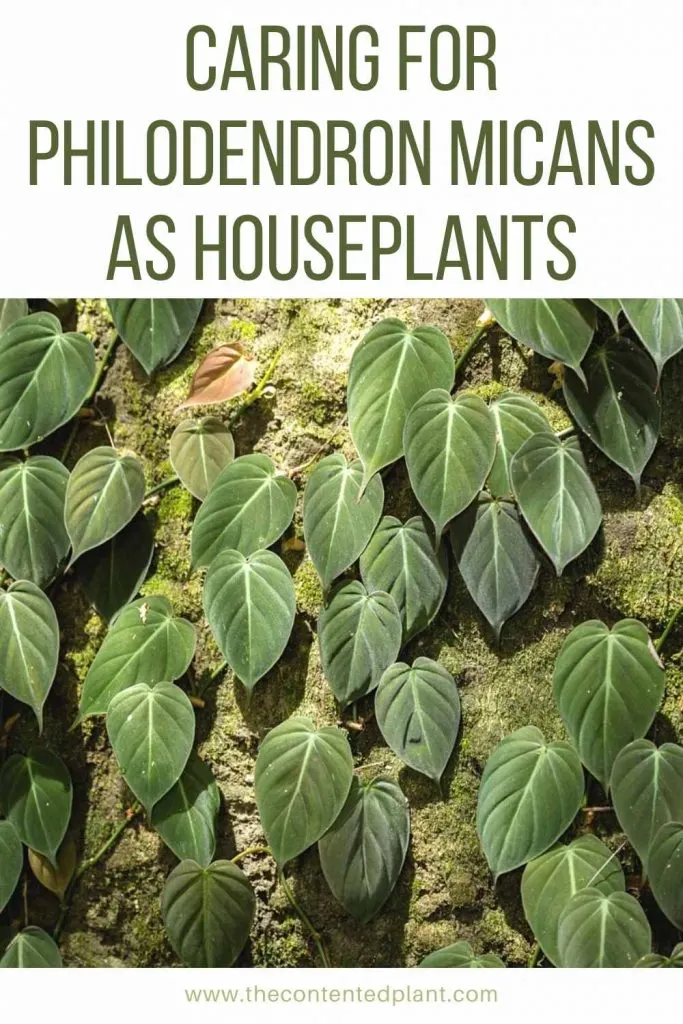

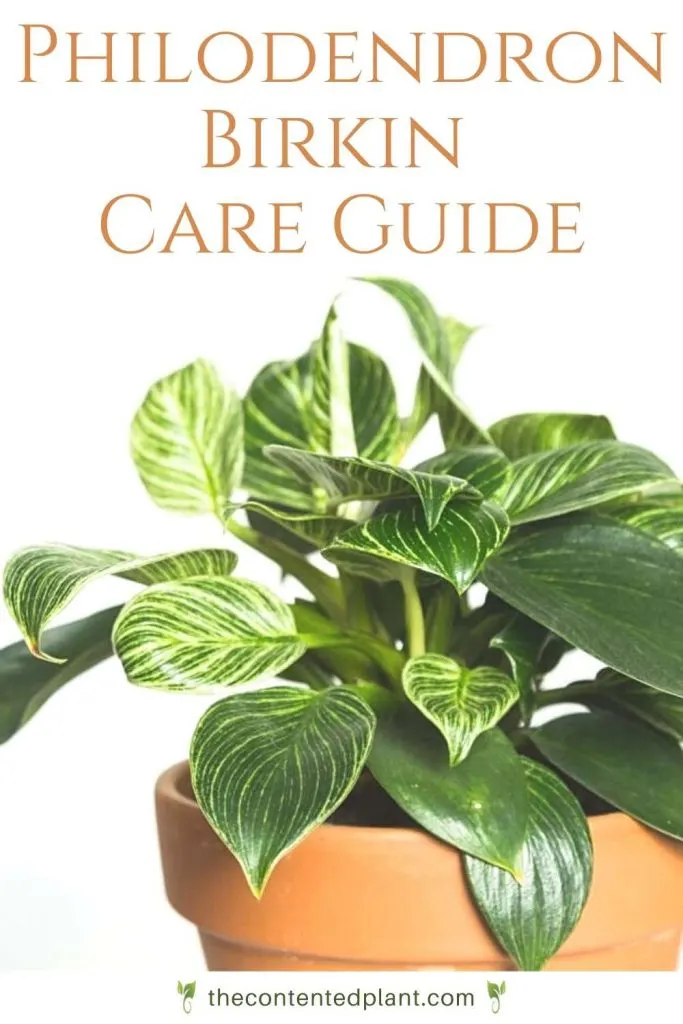
We hope this answered your care questions about this plant. If you have any further questions please leave them down below! We love to talk and connect with you guys!
Follow Us:
Find us on YouTube, Instagram , Pinterest and TikTok! We love to Plant chat. We also comment, like and occasionally share your content to our daily stories. We’d love to see your plants. Share your joy in your houseplants. Happy Planting!

